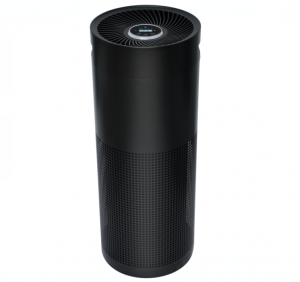Mycoplasma pneumonia, often referred to as a winter disease, has become a growing problem in many parts of the world. Since China is one of the countries severely affected by this respiratory infection, it is crucial to understand its symptoms, potential treatment options, and ways to prevent its spread. The use of air purifiers has become increasingly popular in recent years as they play a vital role in reducing the spread of this disease.

Mycoplasma pneumoniae is caused by the Mycoplasma pneumoniae bacterium and is easily spread through the air. The symptoms of this infection are similar to those of traditional pneumonia, making initial diagnosis challenging. Common symptoms include cough, sore throat, fatigue, headache and fever. In severe cases, individuals may experience difficulty breathing and chest pain. Knowing the symptoms is crucial to recognizing the disease and seeking immediate medical care if necessary.
Unfortunately, there is no specific treatment for mycoplasma pneumonia. However, as long as the immune system is strong, most people recover without treatment. If symptoms persist or worsen, antibiotics such as macrolides or tetracyclines are often prescribed. It is crucial to consult a health care professional for an accurate diagnosis and appropriate treatment. Additionally, practicing good personal hygiene, such as washing your hands regularly and covering your mouth when you cough or sneeze, can help prevent the spread of infection.
In recent years, air purifiers have emerged as a promising tool for reducing the spread of mycoplasma pneumonia. These devices help improve indoor air quality by filtering airborne particles and bacteria, including Mycoplasma pneumoniae. Air purifiers usually consist of filters that capture tiny particles present in the air, including allergens, dust, and pathogens.
The filters used in air purifiers vary in efficiency. To effectively reduce the spread of mycoplasma pneumonia, it is critical to choose a purifier with a high-efficiency particulate air (HEPA) filter. HEPA filters capture particles as small as 0.3 microns, effectively removing Mycoplasma pneumoniae from the air.

By continuously operating an air purifier equipped with a HEPA filter, the concentration of Mycoplasma pneumoniae in the indoor environment can be significantly reduced. This protects people within the space and minimizes the risk of infection. But it’s important to note that air purifiers are not a substitute for other preventive measures. While using an air purifier, you should also maintain good personal hygiene, regular cleaning and proper ventilation.
To sum up, mycoplasma pneumonia is a respiratory infection with symptoms similar to traditional pneumonia. While there is no specific treatment, there are treatment options that can reduce symptoms and support recovery. To prevent the spread of the bacteria that cause mycoplasma pneumonia, the use of air purifiers is becoming more common. Air purifiers equipped with HEPA filters can effectively capture and remove Mycoplasma pneumoniae from the air, thereby reducing bacterial concentrations in indoor environments. However, it is important to remember that air purifiers are only one part of a comprehensive approach to preventing the spread of mycoplasma pneumonia. Personal hygiene practices and proper ventilation should also be practiced to ensure a healthy and safe environment for everyone.

Post time: Nov-29-2023




